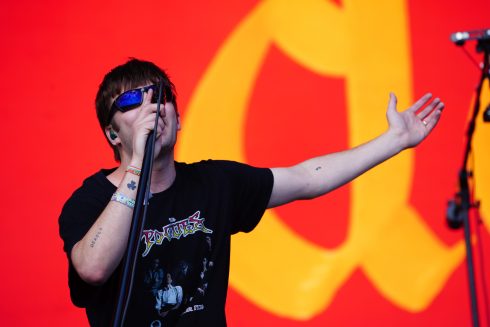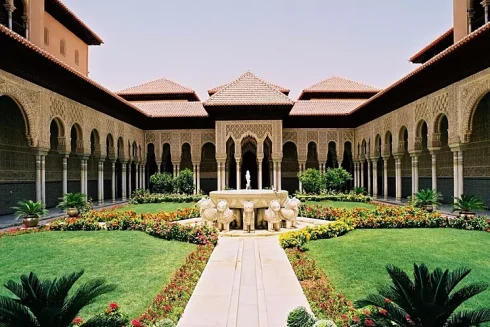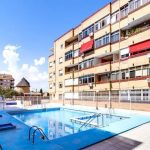WITH over two and a half million visitors a year, the Prado Museum is the beating heart of Madrid’s rich cultural tradition.
Renowned artists such as Goya, Velázquez and El Greco feature prominently in an exhibition of the Spanish monarchy’s magnificent personal collection.
But with over 8,600 paintings, navigating the Prado can often be a tricky task.
Here is a guide to 10 paintings, a mix of the unmissable classics and hidden gems, that will be sure to make any visit an enjoyable one.
The 3rd of May 1808 (1814) – Francisco de Goya – Room 064

An unquestionable highlight of the Prado is its vast collection of works by Goya, widely considered the most important Spanish artist of the late 18th and early 19th centuries.
One of 600 of his works that adorn the Prado’s walls, “The 3rd of May 1808” is a vast, enticing piece that encapsulates the violence and death that typified Goya´s later style.
A haunting depiction of the execution of Spanish patriots by Napoleon’s forces during the Peninsular War, Goya’s skilful use of light illuminates the drama, tension and heroism of the scene, making it an unmissable stop on any Prado tour.
Las Meninas (1656) – Diego Velázquez – Room 012

One of the most iconic paintings of all time, “Las Meninas” by Spanish great Velázquez has long captured the imagination of art historians.
Painted in his typically dramatic, baroque style, “Las Meninas” represents a radical departure from traditional royal portraiture.
To the left of the paintings stands Velázquez himself, whose playful use of perspective remains an inexhaustible mystery for those who seek to uncover its mystery.
The Adoration of the Shepherds (1612-14) – El Greco – Room 010B

Painted in his quintessentially dramatic style, often denoted as a precursor to the modern movements of Cubism and Expressionism, this nativity scene is considered as El Greco´s final work before his death in 1614.
This tall, gangly canvas is rich with colour, light and darkness, creating a captivating path towards the young baby Jesus, surrounded by Joseph and three shepherds.
With its religious themes and vivid colours, El Greco´s last dance acts as an appropriate representation of his magnificent career.
The Cardinal (1510-11) – Raphael – Room 049

Reminiscent of Leonardo da Vinci´s great “Mona Lisa”, this portrait by the Italian renaissance star Raphael is arguably equally as engaging as its famous friend.
With striking colours and an impeccably accurate definition, the work is technically superb. Yet its true mystique lies in the ambiguity central to its creation.
The identity of the cardinal in question remains a mystery, with considerable debate dedicated to identifying the sitter with little success.
The Descent from the Cross (before 1443) – Rogier van der Weyden – Room 058

A truly unmissable creation, van der Weyden´s masterpiece is a breathtaking visit.
Within a curious cross-like structure, an elegant mastery creates an astonishingly beautiful piece.
At the centre lies Christ, inert after his crucifixion.
To each side are mourners, painted in vivid detail, whose suffering and distress reflects the emotional tragedy of the scene.
Painted early on in van der Weyden´s career, it is widely regarded as the most important representation of the crucifixion to come out of the Netherlands.
Olympus. The Battle of the Giants (1767-68) – Francisco Bayeu – Room 089

Taught under the same school as Goya, Bayeu´s frescoes are littered across every corner of the Prado.
Depicting the Giants´efforts to conquer the home of the Gods on Mount Olympus and its defence by Jupiter, this canvas is indicative of Bayeu´s fascination with grandiose scenes, often historical, mythological or religious in nature.
The Prado also holds 20 sketches made by Bayeu in preparation for this particular piece.
Vase of Flowers (first quarter of the 17th century) – Brueghel the Elder – Room 082

A pleasing break from the intensity of grand religious and historical portrayals, Brueghel’s floral still lifes bring the enchanting charms of nature into plain view.
The vibrant colours contrast with a darkened background, whilst a handful of insects dotted across the canvas give a sense of mobility to the still frame.
Saturn Devouring His Son (1819-23) – Francisco de Goya – Room 067

Goya´s so-called “Black Paintings” are a haunting, mysterious and violent collection of works that symbolise the darker themes that surrounded the master´s career towards the end of his life.
Created to adorn the walls of his own home, “Saturn Devouring His Son” is the most viscerally frightening example within the collection – a great, beastly figure feasting on the body of a dismembered and beheaded boy.
Landscape with Saint Jerome (1516-17) – Joachim Patinir – Room 055A

A spectacular, awe-inspiring canvas, jagged rocks and treacherous cliffs catch the eye.
But Patinir´s use of a horizon far in the distance allows him to develop the landscape of the land, filled with mountains, lakes, forests, grasslands, settlements and all manner of intricacies.
Like Brueghel’s work, Patinir´s painting allows for an appreciation of the natural, typical of the Flemish renaissance.
The Sense of Sight (1617) – Brueghel the Elder, Peter Paul Reubens – Room 083

Collaborations between artists, even those as prominent as Brueghel and Reubens, were not uncommon during the era of the Flemish renaissance.
One of five representations of each of the senses, “The Sense of Sight” shines with intricate detail that fascinates anyone lucky enough to see it.
READ MORE:
- Is Spain’s biggest art museum going TOO woke? Madrid’s El Prado is removing words like ‘dwarf’, ‘disabled’ and ‘deformation’…
- Environmental protestors glue hands to Goya paintings in Spain’s world-famous Prado Museum
- Spain’s world-famous Prado Museum to open its doors to public on Saturday nights










